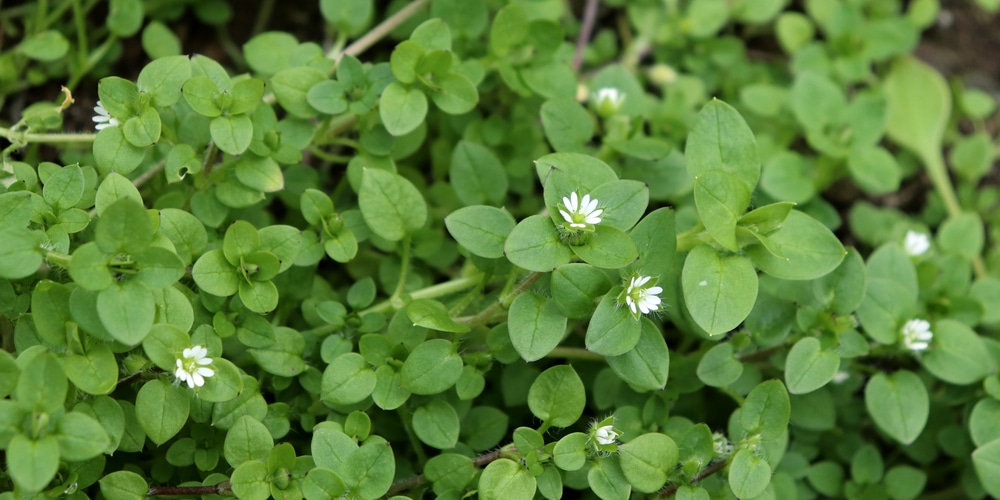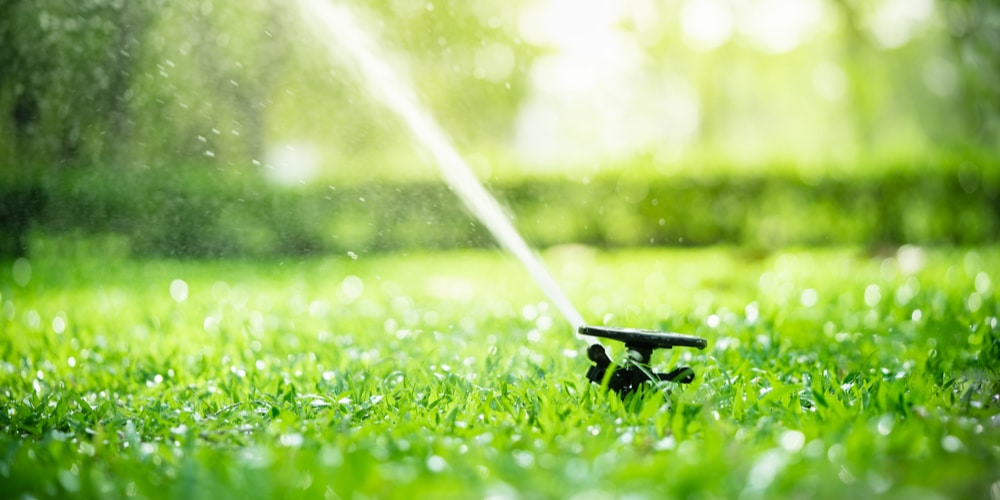Chickweed, otherwise known as satin flower, mouse ear or starweed is a common weed with a curious, low-growing habit, wide foliage, and dainty white blooms. When looking to remove this fast-spreading weed cultivar, you may see the herbicide Tenacity at the top of the list. So, is tenacity for chickweed the right herbicide? We’ll discuss the methods and other solutions below.
Does Tenacity Kill Chickweed?
Prior to spending money to get a specific weed killer, it’s best to address the question ‘does Tenacity work for chickweed?’
As stated in the label and product description, Tenacity can target and kill chickweed, alongside others such as foxtail, dandelion, crabgrass, clover, purslane, oxalis, and more. Applied the right way, the herbicide can eliminate the presence of chickweed in your lawn or garden and pave the way for your preferred turf and plants.
It’s worth noting that Tenacity works as a pre-emergence and post-emergence solution. You can use it to remove residual weeds and selectively destroy them among turfgrasses such as Perennial Ryegrass, Fine Fescue, Tall Fescue, Buffalograss, Centipedegrass, and Kentucky Bluegrass. Use on St. Augustine to kill Bermuda weed is not recommended.
If you have bermudagrass, zoysia, bentgrass, kikuyu grass, Poa annua, or seashore paspalum then it’s recommended that you try other weed killer products or herbicides.
How to Apply Tenacity on Your Lawn or Yard
Instructions on tenacity chickweed control will depend on whether it’s a pre-emergent or post-emergent. An 8-ounce bottle can cover an acre or two for weed control.
Start by mixing around four to eight ounces of Tenacity in 30 gallons of water for each acre of lawn you have. As a pre-emergent, it’s best that you don’t exceed five ounces per acre on fine fescues or perennial ryegrass, and four ounces per acre on St. Augustine sod.
For post-emergent sprays, you should mix the solution with a surfactant for the best results. You may also need to reapply after 2-3 weeks to get the chickweed under control.
Wear protective clothing, as well as eye gear and a face mask whenever you’re out spraying herbicides on your lawn. Spray the area thoroughly and ensure that the solution makes contact with the plant and ground. Also, you should time it so the weather is calm and there aren’t any strong winds or direct sunlight.
How Do You Stop Chickweed? Here are Three Organic Ways
Water Your Lawn Well
The best way to prevent chickweed from taking over your yard or lawn is to keep your grass regularly hydrated. A thick and healthy lawn will have a greater chance to overcome unwanted guests such as chickweed. Also, deep and infrequent watering is key since chickweed isn’t likely to thrive in this environment.
Fertilize Regularly
Fertilizing is another way to prevent chickweed in your garden. Feed with the recommended fertilizer up to four times every growing season so the turf becomes thick and lush, and thus prevent chickweed seeds from sprouting and establishing themselves.
Mow at the Right Height
Lastly, you should mow your grass at the recommended height. Generally speaking, the mower blade should be set at around two to three inches so the lawn stays healthy and high enough that the grass canopy will capture all the essential sunlight. A once-weekly mowing or less is a great weed deterrent, regardless of grass species or season.


